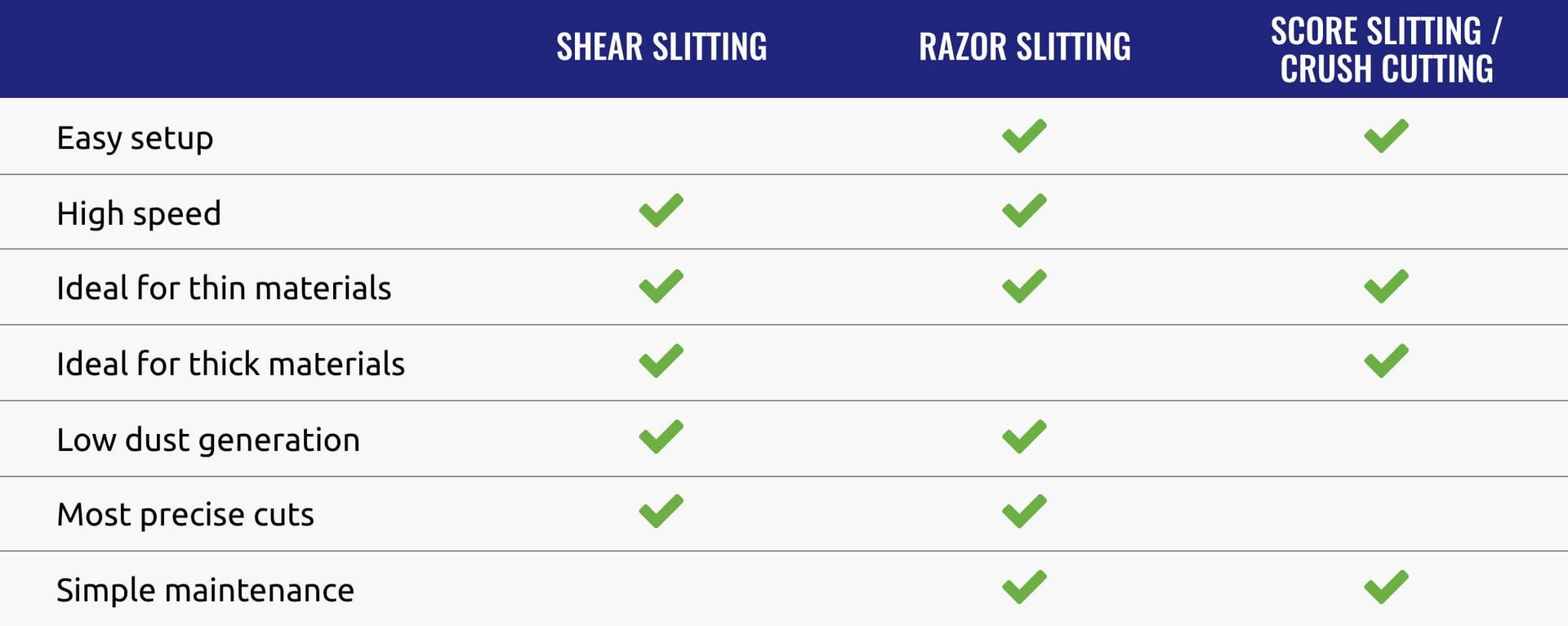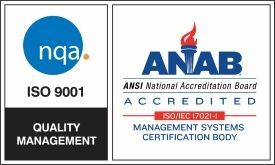What You Should Know About the Top Three Industrial Blade Solutions
1. A look at the shear slitting process
Shear slitting’s industrial blade products include top and bottom circular knives to create a scissor-cutting action. This common slitting method runs at high speeds with accurate slit widths and close tolerances. It delivers a clean, even cut with minimal dust generation compared to other slitting methods.
Best applications for shear slitting
Thicker-gauge materials are a good fit for shear slitting, along with a wide variety of materials including:
- Films
- Foils
- Laminates
- Nonwovens
- Paper
- Tapes
- Textiles
2. Razor slitting, explained
Razor slitting uses small, sharp razors to deliver the cleanest edge compared to other slitting methods. The blades are either mounted in individual holders in the air or in a groove roll. This economical industrial blade solution has fast setup, simple maintenance and low tooling costs.
Best applications for razor slitting
Thin, non-abrasive applications such as thin films and light foils are ideal for razor cutting including:
- Aluminum foil
- Cellophane
- Copper foil
- Battery film
- Nonwovens
- Nylon
- Paper
- Plastic film
- Polyester
3. A overview of score cutting and crush cutting
Score cutting, also known as crush cutting, uses brute force to cut the web. A pneumatic knife is pressed against a hardened anvil roll, or scoring sleeve, to crush the material into separate pieces. It can also be used to partially penetrate a material so that it’s easy to fold or tear with perforations .
Crush cut slitting has quick setup without the need for set-up parameters and is less expensive than shear or razor slitting. It does, however, run at lower speeds.
The pressure that’s applied in this slitting process would damage a knife with a sharp tip. Therefore,
score cutting knives are designed with a radius at the tip of the blade to endure pressure while creating the proper cut. Custom toothing patterns can be designed into the knife for unique perforations.
Best applications for score cutting
Score cutting is ideal for tough materials and also works well for a variety of applications including:
- Adhesive materials
- Foil
- Laminates
- Linoleum
- Nonwovens
- Paper
- Polyester
- Rubber
- Sandpaper
- Textiles
Slitting methods comparison

Leverage Valley Grinding’s expertise to find your slitting solution
Our knowledgeable team at Valley Grinding can provide the right slitting solution based on your application and end goals through a consultation. Once your method is determined, we also offer training for your team for machine setup, blade maintenance, safety training and more to ensure your most efficient and precise slitting.
WISCONSIN
HOURS
HOURS
CONTACT US
Rebuild, Repair, Recondition, Retool


Share On: